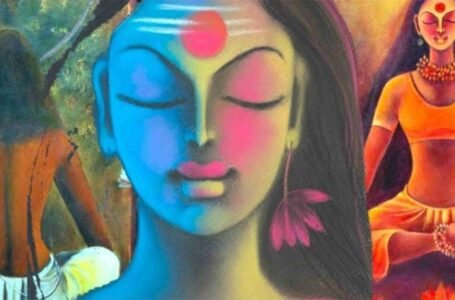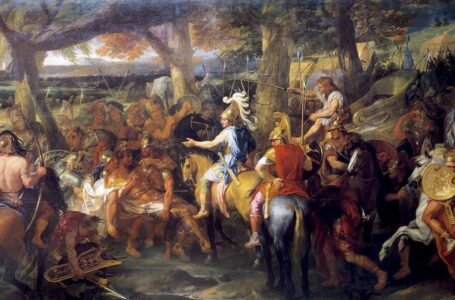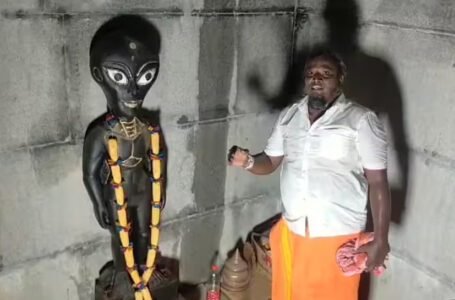Bhairavi: The Terrifying Aspect of the Divine Feminine
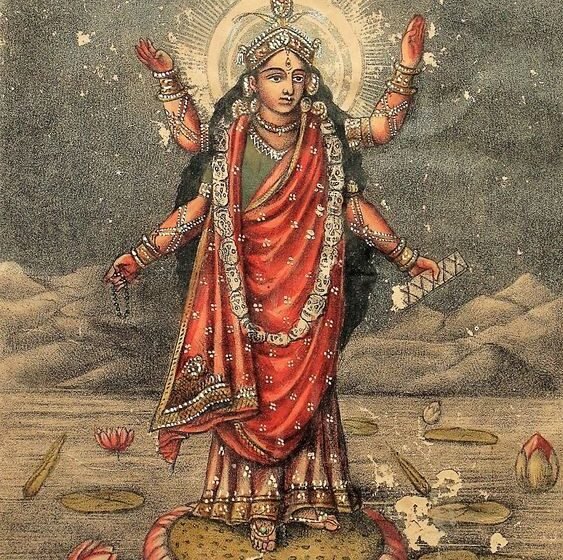
Bhairavi is the fifth goddess in the Dasa Mahavidyas and is worshiped as a manifestation of goddess Kali. Her name Bhairavi is derived from a Sanskrit word which means terror or fearful, as well as someone who inspired awe amongst the spectators. Bhairavi is associated with Bhairava as his consort who is the male form and fierce manifestation of Lord Shiva. She is known as the goddess of fear, death, decay, and destruction. Her fierce attributes come from the innate aspects of fiery gods like Agni the god of fire, Surya the sun god and Vidyut the god of lightening. Together her fury and terror encompass the gods above.

A well known legend of Bhairavi involves her role in the destruction of the demons Chanda and Munda. According to the text Devi Mahatmya, the foundational book of Shaktism, the demons Chanda and Munda were generals of the demon king Shumbha. When they attacked the goddess Durga, she became agitated, and from her forehead emerged the fierce form of Bhairavi, also known as the Chandi that killed the demons Chanda and Munda. In another myth Bhairavi is portrayed as the Shakti of Bhairava, and together they embody the dynamic forces of the universe. Bhairava represents the static, unchanging consciousness, while Bhairavi is the active, changing energy or Shakti. Their union if symbolic of the ultimate reality in which consciousness and energy are inseparable.
Goddess Bhairavi’s iconography is rich and evocative, where her fierceness and tremendous power can be felt. Bhairavi is often depicted with a dark or red complexion; at times she is shown to resemble Parvati with a halo shining bright from behind her body. The dark colour represents the unknown, the unconscious, whereas the red colour represents her fiery, energetic, and terrifying aspects highlighting her as the goddess of destruction and terror. Bhairavis facial expressions in most of her depictions are of intense ferocity. Her eyes are usually wide open and piercing, she is also shown smiling with her bared teeth, representing her ever readiness to confront and fight the negative forces.

The goddess in her portrayals has four arms. Each arm holds a significant emblem or weapon, adding to her terrifying imagery and emphasizing her as the warrior goddess. In her depictions of cremation grounds she is shown in red skin and is seen holding a Trishula or a trident in one hand. This represents her power to destroy the ego and transcend the material world. In the other hand she holds a severed head of a demon; her fourth hand is in the Abhaya Mudra, telling her devotees to not fear, as she sits upon a headless corpse wearing a garland of skulls around her neck.
In her other portrayals where she resembles Parvati, the goddess is seen holding a rosary in one hand, a book and her other two arms are in the mudras of Abhaya and Varada. In these depictions she wears red garments. Many of her images are associated with the slaying of the demons Chanda and Munda. This imagery of her slaying the demons is depicted in various texts and artworks, showing her as she emerges from the forehead of Durga with her eyes blazing with fury. The goddess is often times also portrayed in a dance of destruction on the battlefield where she is surrounded by the bodies of the slain demons. This dance, similar to the Tandava of Shiva, symbolizes the cosmic cycle of creation, preservation, and destruction.
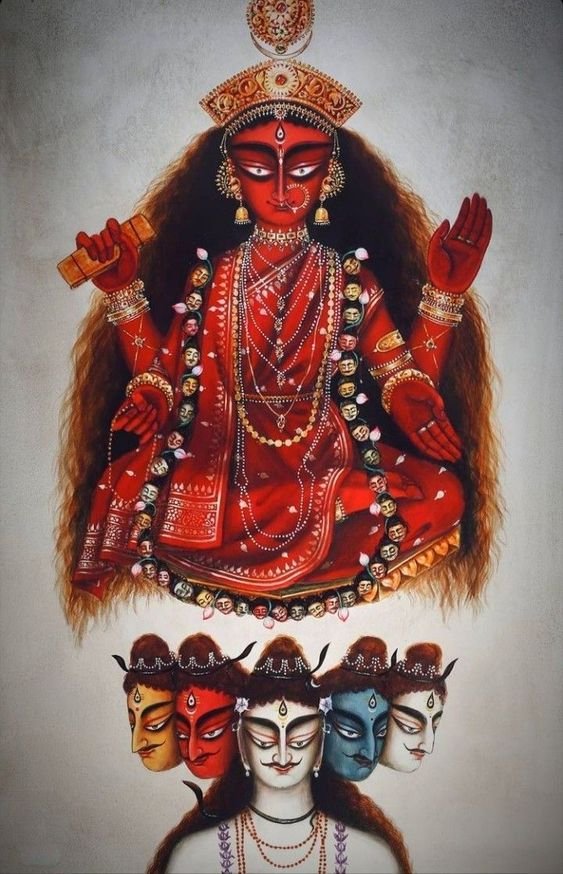
The fierce imagery of Bhairavi is not just to create fear, but it is to show the importance of facing and overcoming one’s fears to transcend beyond the material world and achieve spiritual growth. Her terrifying form acts as a reminder of the impermanence of life and the need for an individual to confront the darker aspects of existence.
Bhairavi’s worship is rooted in the tantric traditions and practices which are esoteric and require complex and also a well versed Guru to hold the worship of the goddess. These rituals require an understanding of mantra, yantra and mudra. Mantra’s are specific sounds and syllables chanted to invoke the goddess’s presence. Yantra is a geometric design or diagram, and Bhairavi yantra is used as a divine form and power to meditate upon the goddess. The goddess in her depictions is usually seen doing the mudras or hand gestures which become an important form of her worship. Devotees incorporate these mudras while praying to the goddess to summon her energy. Bhairavi is also worshipped during Navaratri festival. On the fifth day of the festival, devotees honour Bhairavi in order to seek her blessings. One of the most famous temples dedicated to the goddess is located in Mantrayana, a village in Andhra Pradesh, India. The rituals performed in this temple are of tantric traditions.
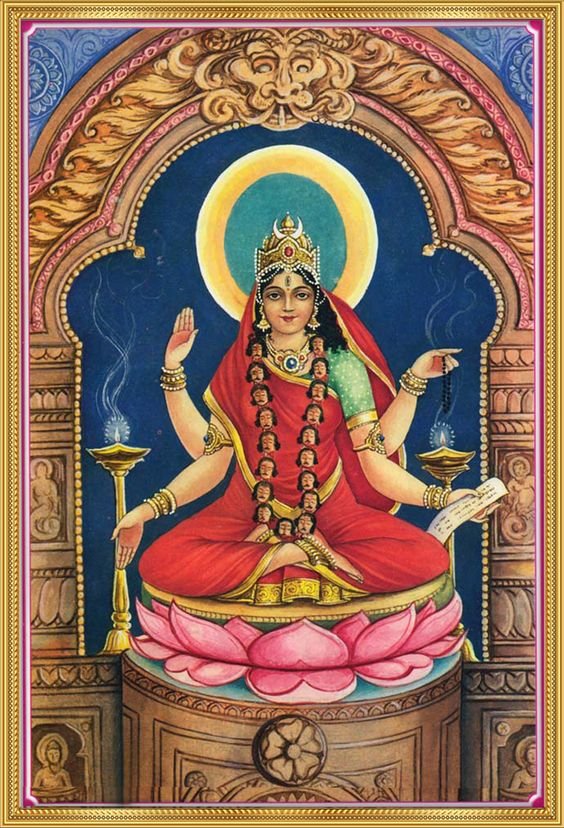
Goddess Bhairavi is a significant goddess in the tantric tradition, as she represents the fierce and transformative attributes of Divine Feminine. In tantric traditions, she is linked with the awakening of Kundalini, the dormant spiritual energy residing at the base of the spine. She is believed to help in the ascent of Kundalini through the chakras, leading to spiritual enlightenment and liberation. Her fierce energy is seen as essential for breaking through the granthis or knots that block the flow of Kundalini. Because of this aspect of hers, during meditation she is invoked upon. The Homa, of the fire ritual, is an integral part of tantric worship. In Bhairavi Homa, the goddess is provided with offerings in the fire while her mantras are chanted. This ritual is done to purify the devotees. In various tantric scriptures Bhairavi is regarded as an important goddess. In these scriptures she is described as the destroyer of ignorance as well as the embodiment of supreme knowledge. Texts such as the Tantrasara and the Kularnava Tantra speak of the ways in which she is to be worshiped, of her attributes, and highlight her transformative power that she bestows upon her devotees.

Bhairavi is a powerful emblem of destructive and transformative aspects of the divine feminine. Through her fierce and terrifying nature, she challenges her devotees to confront their fears, overcome obstacles, and seek higher knowledge and liberation. Her worship rooted in tantric worship that sees the divine feminine as the god head, emphasizes on her powers of destruction, preservation and creation, as she holds an essential position and status within the pantheon of Hindu goddesses.
